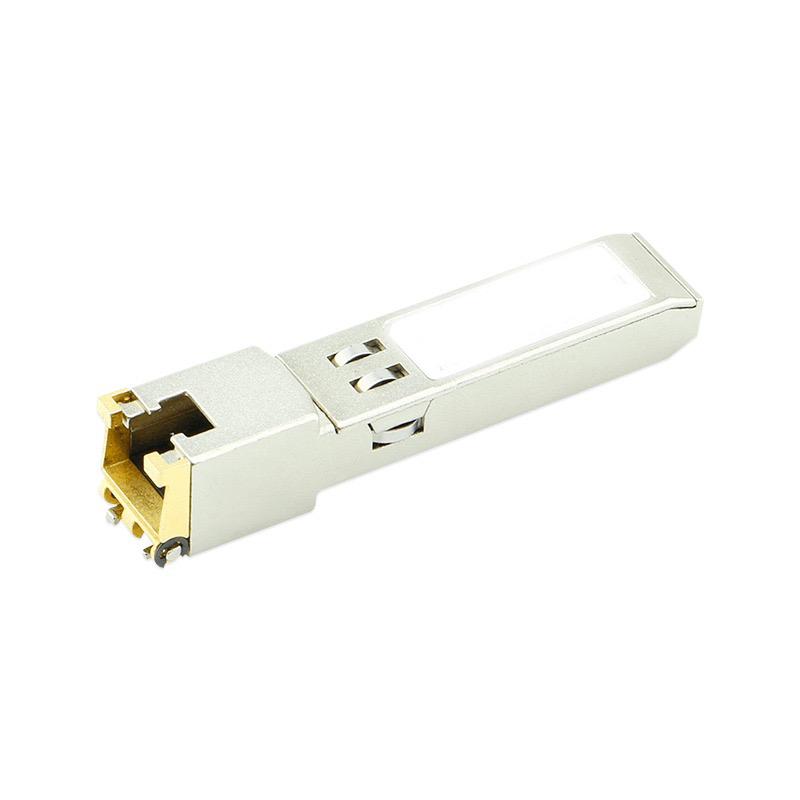COPPER MODULES BUYING GUIDES
What is Copper SFP Transceiver Module?
While fiber optical SFP modules are commonly utilized in data center solutions, copper SFP modules are not as widely employed. However, it is incorrect to assume that the performance of fiber optical SFP modules surpasses that of copper SFP modules. In fact, copper modules exhibit commendable performance and offer distinct advantages. In this article, AMP will provide insights into the features and solutions associated with copper SFP modules.
What is Copper SFP module?
The Copper SFP module, also known as the fiber port convert copper port module, is a hot-pluggable module designed in SFP format. It features an RJ45 connector type and is capable of supporting hot plugging. Notably, the transmission distance of the copper module typically ranges from 10 to 30 meters or 80 to 100 meters, making it suitable for short-distance data transmission purposes.

Features and advantages of the copper SFP module
The copper SFP module adheres to the SFP MSA and IEEE Std 802.3-2002 standards, boasting attributes such as low power consumption, superior performance, and a compact form factor. Furthermore, it addresses the limitation of SFP+ high-speed cable transmission distance and enables direct utilization of the existing copper cabling infrastructure for achieving 10G data transmission rates. This eliminates the need for cable rerouting associated with SFP+ optical modules, consequently minimizing network deployment costs.
The copper SFP module encompasses four variants: 100Base SFP, 1000Base SFP, 10/100/1000 SFP, and 10G SFP+. Each serves distinct application purposes
1) The 100Base copper SFP module addresses instances of network port insufficiency within devices.
2) The 1000Base copper SFP module facilitates gigabit ethernet connections, although its fixed speed rate limits its adoption among customers.
3) The 10/100/1000BASE copper port SFP module supports both high-speed Ethernet and Gigabit Ethernet, offering versatility in speed and catering to diverse application requirements.
4) The 10G copper SFP+ module is tailored for high-speed communication links, primarily deployed in 10 Gigabit Ethernet setups. It represents a pioneering 10G optical module capable of transmitting data over network cables, serving as a connectivity solution between SFP+ ports and network devices equipped with RJ45 interfaces.
What is the difference between a copper SFP module and fiber optical SFP module?
The copper SFP module utilizes RJ45 interfaces, while the fiber optical SFP module predominantly employs LC duplex interfaces, although LC simplex and MTP/MPO interfaces are also available.
Distinct connectivity methods are observed: Copper SFP modules typically pair with CAT5, CAT6, CAT6A, or CAT7 network cables, whereas fiber optic SFP modules are typically linked via fiber patch cords.
Notable variations exist in parameters: Unlike fiber optical SFP modules, copper SFP modules lack wavelength specifications.
Differences extend to their constituent parts: The components of copper and fiber optical SFP modules differ significantly, notably in the absence of the laser, a core component in copper SFP modules.
Conclusion
AMP offers various copper SFP modules with different speed rates. If you have any inquiries regarding these products, please don't hesitate to reach out to us for assistance!